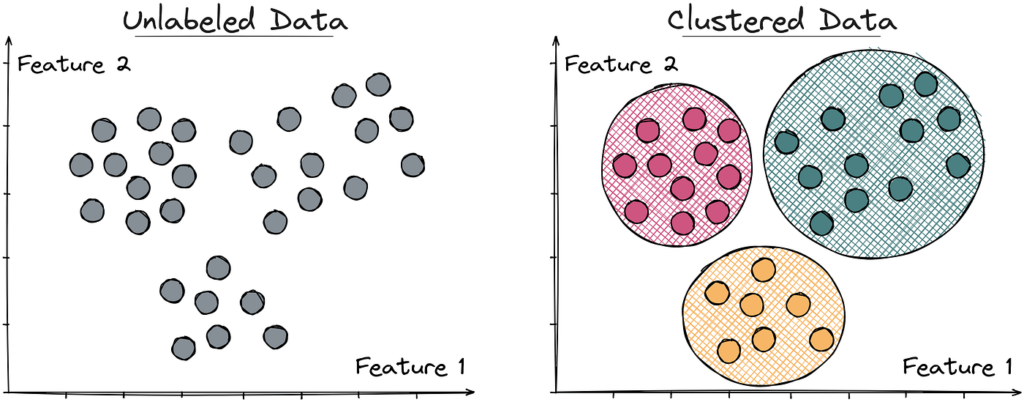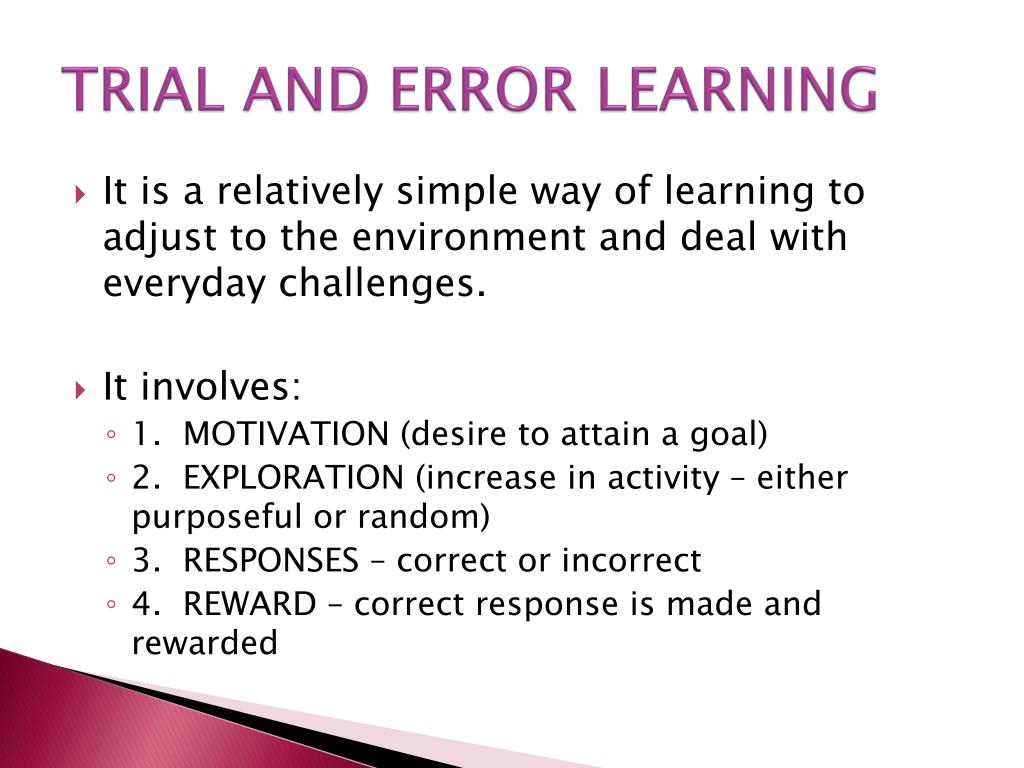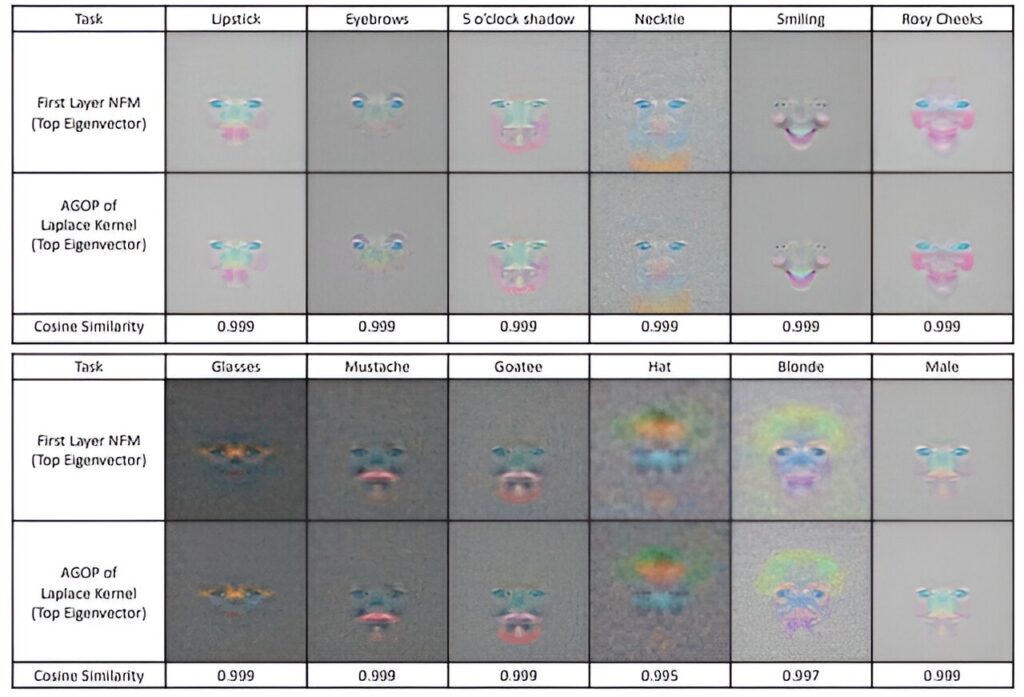Artificial Intelligence (AI) is transforming our world in remarkable ways. From smart assistants to self-driving cars, AI is everywhere. But what exactly is AI, and why is it so important? This article will explore the fascinating world of AI, shedding light on its core techniques and their profound impact on our daily lives. Dive in to discover how AI is shaping the future and why it matters to you. AI Techniques In Artificial Intelligence
Training Models with Labeled Data

Supervised learning, or training models with labeled data, is one of the foundational techniques in AI. This method involves feeding the AI system with a dataset where each input is paired with the correct output. The model learns to make predictions or decisions based on this labeled data. AI Techniques In Artificial Intelligence
Imagine teaching a child to recognize animals. You show them pictures of different animals and tell them their names. Over time, the child learns to identify animals on their own. Similarly, in supervised learning, the AI model is trained with labeled examples until it can accurately predict the labels for new, unseen data. AI Techniques In Artificial Intelligence
Real-Life Examples
- Email Spam Detection: Email services like Gmail use supervised learning to filter spam. By training the model with labeled examples of spam and non-spam emails, the system learns to identify and filter out unwanted messages.
- Medical Diagnosis: AI models are trained with labeled medical images to detect diseases in healthcare. For instance, a model can be trained to identify tumors in X-ray images by learning from a dataset where tumors are labeled.
- Voice Assistants: Virtual assistants like Siri and Alexa use supervised learning to understand and respond to voice commands. They are trained with labeled data where each voice command is paired with the correct response.
Identifying Patterns in Unlabeled Data

Unsupervised learning is a fascinating branch of AI that focuses on identifying patterns in unlabeled data. Unlike supervised learning, where the model is trained with labeled examples, unsupervised learning works with data that has no predefined labels. The goal is to discover hidden structures and relationships within the data. AI Techniques In Artificial Intelligence
Think of it like exploring a new city without a map. You wander through the streets, observing the architecture, the layout, and the people. Over time, you notice patterns and landmarks that help you understand the city’s structure. Similarly, unsupervised learning algorithms sift through data to find meaningful patterns without any prior guidance. AI Techniques In Artificial Intelligence
Real-Life Examples
1. Customer Segmentation: Businesses use unsupervised learning to group customers based on their purchasing behavior. For instance, an online retailer might analyze purchase histories to identify distinct customer segments, such as bargain hunters, frequent buyers, and seasonal shoppers. This helps in tailoring marketing strategies to different customer groups. AI Techniques In Artificial Intelligence
2. Anomaly Detection: In cybersecurity, unsupervised learning is used to detect unusual patterns that may indicate fraudulent activity. For example, banks use these algorithms to monitor transactions and flag any that deviate significantly from a customer’s typical behavior, potentially identifying fraudulent transactions. AI Techniques In Artificial Intelligence
3. Market Basket Analysis: Retailers analyze transaction data to find associations between products. For example, a supermarket might discover that customers who buy bread often also purchase butter. This insight can be used to optimize product placement and promotions. AI Techniques In Artificial Intelligence
Unsupervised learning is like a detective uncovering hidden clues in a vast sea of data. It helps us make sense of complex information and uncover insights that might otherwise go unnoticed. This technique is invaluable in many fields, from marketing to cybersecurity, making our interactions with technology smarter and more intuitive. AI Techniques In Artificial Intelligence
Learning Through Trial and Error to Maximize Rewards

Reinforcement learning is a powerful AI technique that involves learning through trial and error to maximize rewards. Unlike supervised learning, where the model learns from labeled data, reinforcement learning focuses on making decisions by interacting with an environment and receiving feedback in the form of rewards or penalties. AI Techniques In Artificial Intelligence
Imagine teaching a dog new tricks. You reward the dog with treats when it performs the desired action and withholds treats when it doesn’t. Over time, the dog learns which actions lead to rewards and repeats those actions more frequently. Similarly, in reinforcement learning, an AI agent learns to make better decisions by exploring different actions and learning from the outcomes.
Real-Life Examples
1. Game Playing: One of the most famous applications of reinforcement learning is in game playing. AI systems like AlphaGo and AlphaZero have used reinforcement learning to master complex games like Go and chess. By playing millions of games against itself, the AI learns strategies that surpass human capabilities. AI Techniques In Artificial Intelligence
2. Robotics: In robotics, reinforcement learning is used to teach robots how to perform tasks such as walking, grasping objects, or navigating through environments. For example, a robot might learn to walk by receiving positive rewards for stable steps and negative rewards for falling. AI Techniques In Artificial Intelligence
3. Autonomous Vehicles: Self-driving cars use reinforcement learning to navigate roads safely. The AI system receives rewards for actions that lead to safe driving, such as staying in the lane or avoiding obstacles, and penalties for unsafe actions. AI Techniques In Artificial Intelligence
Reinforcement learning is like a curious explorer, constantly trying new things and learning from the results. This trial-and-error approach allows AI systems to adapt and improve over time, making them more effective in dynamic and complex environments. Whether it’s mastering a game, performing a task, or driving a car, reinforcement learning helps AI achieve remarkable feats through persistence and learning from experience.
Utilizing Neural Networks for Complex Data Analysis

Neural networks have revolutionized the field of data analysis, enabling us to tackle complex problems that were previously insurmountable. These sophisticated algorithms mimic the human brain’s structure and function, allowing them to learn from vast amounts of data and make predictions or decisions with remarkable accuracy.
Real-Life Examples
1. Healthcare Diagnostics: Neural networks are being used to analyze medical images, such as X-rays and MRIs, to detect diseases like cancer at an early stage. For instance, Google’s DeepMind has developed an AI system that can diagnose eye diseases with an accuracy comparable to that of expert ophthalmologists. This technology not only speeds up the diagnostic process but also ensures that patients receive timely and accurate treatment.
2. Financial Fraud Detection: In the financial sector, neural networks help in identifying fraudulent transactions. Companies like PayPal use neural networks to analyze transaction patterns and flag suspicious activities. This has significantly reduced the incidence of fraud and saved millions of dollars. AI Techniques In Artificial Intelligence
3. Personalized Recommendations: Platforms like Netflix and Amazon leverage neural networks to provide personalized recommendations to their users. By analyzing viewing or purchasing history, these systems can suggest movies, shows, or products that align with individual preferences, enhancing user experience and engagement. AI Techniques In Artificial Intelligence
Adding a Human Touch
Imagine a world where your doctor can diagnose a complex condition with the help of an AI assistant, ensuring you get the best possible care without long wait times. Or consider how secure you feel knowing that your bank is using advanced technology to protect your hard-earned money from fraudsters. And think about the joy of discovering a new favorite show or product, thanks to a recommendation that feels like it was made just for you.
Neural networks are not just about numbers and algorithms; they are about improving our lives in tangible ways. They bring efficiency, accuracy, and personalization to various aspects of our daily routines, making the world a smarter and more connected place. AI Techniques In Artificial Intelligence
Enabling Machines to Understand and Process Human Language

Natural Language Processing (NLP) is a branch of artificial intelligence that focuses on the interaction between computers and humans through natural language. This technology allows machines to understand, interpret, and generate human language, making it possible for us to communicate with computers as if they were human. AI Techniques In Artificial Intelligence
Real-Life Examples
1. Virtual Assistants: Virtual assistants like Siri, Alexa, and Google Assistant use NLP to understand and respond to user commands. These assistants can perform tasks such as setting reminders, playing music, and answering questions, all through natural language interaction. For instance, you can ask Alexa to play your favorite song or inquire about the weather, and it will respond accurately and promptly. AI Techniques In Artificial Intelligence
2. Customer Support Chatbots: Many companies use chatbots to handle customer inquiries. These chatbots can understand and respond to a wide range of questions, providing instant support. For example, when you visit a website and a chat window pops up asking if you need help, that’s often an NLP-powered chatbot. These bots can handle everything from tracking orders to troubleshooting issues. AI Techniques In Artificial Intelligence
3. Language Translation: Tools like Google Translate use NLP to translate text from one language to another. This technology has made it easier for people to communicate across language barriers. Imagine traveling to a foreign country and using your phone to translate signs or have conversations with locals—NLP makes this possible. AI Techniques In Artificial Intelligence
Adding a Human Touch
Think about the convenience of asking your virtual assistant to remind you of an important meeting or to play your favorite podcast while you cook dinner. Or the relief of getting quick, accurate answers from a chatbot when you’re trying to resolve an issue with an online order. And consider the excitement of being able to communicate with someone from a different country, thanks to real-time translation on your smartphone.
NLP is not just about making machines smarter; it’s about making our lives easier and more connected. It brings a human touch to technology, allowing us to interact with machines naturally and intuitively. Whether it’s through a friendly voice assistant, a helpful chatbot, or a powerful translation tool, NLP is transforming the way we communicate and interact with the world around us.
Techniques for Interpreting and Understanding Visual Data
Interpreting and understanding visual data is crucial in today’s data-driven world. Various techniques help transform raw data into meaningful insights, making it easier to comprehend complex information and make informed decisions. AI Techniques In Artificial Intelligence
Real-Life Examples
1. Heat Maps: Heat maps are used to represent data values through color variations. For instance, in healthcare, heat maps can visualize patient data to identify areas with high incidences of diseases. This helps in allocating resources more effectively and planning targeted interventions. AI Techniques In Artificial Intelligence
2. Scatter Plots: Scatter plots are useful for identifying correlations between two variables. In the field of environmental science, scatter plots can show the relationship between pollution levels and health outcomes. This visualization helps researchers and policymakers understand the impact of environmental factors on public health. AI Techniques In Artificial Intelligence
3. Geospatial Mapping: Geospatial mapping involves using maps to visualize data related to geographic locations. For example, during the COVID-19 pandemic, geospatial maps were used to track the spread of the virus, helping authorities implement timely measures to control outbreaks. AI Techniques In Artificial Intelligence
Adding a Human Touch
Imagine a doctor using a heat map to quickly identify regions with high rates of a particular illness, enabling them to focus their efforts where they are needed most. Or think about an environmental scientist using a scatter plot to demonstrate the clear link between air quality and respiratory diseases, advocating for cleaner air policies. And consider the relief of seeing a geospatial map that shows the decline in COVID-19 cases in your area, giving you hope and reassurance.
These techniques are not just about numbers and charts; they are about making data accessible and actionable. They help us see patterns and connections that might otherwise go unnoticed, empowering us to make better decisions and improve our lives. AI Techniques In Artificial Intelligence
Real-World Applications in Various Sectors (e.g., Healthcare, Finance, Education)

Artificial intelligence (AI) and machine learning are transforming numerous industries by providing innovative solutions to complex problems. Let’s explore how these technologies are making a significant impact in healthcare, finance, and education. AI Techniques In Artificial Intelligence
Healthcare
1. Predictive Analytics: AI is used to predict patient outcomes and identify potential health risks. For example, hospitals use predictive analytics to foresee patient readmissions and take preventive measures. This not only improves patient care but also reduces healthcare costs. AI Techniques In Artificial Intelligence
2. Personalized Medicine: AI helps in creating personalized treatment plans based on a patient’s genetic makeup and medical history. Companies like IBM Watson Health are using AI to analyze vast amounts of medical data to recommend tailored treatments for cancer patients. AI Techniques In Artificial Intelligence
3. Robotic Surgery: AI-powered robots assist surgeons in performing precise and minimally invasive surgeries. The da Vinci Surgical System, for instance, enhances the surgeon’s capabilities, leading to quicker recovery times and reduced complications for patients. AI Techniques In Artificial Intelligence
Finance
1. Fraud Detection: Financial institutions use AI to detect fraudulent activities by analyzing transaction patterns. For example, Mastercard employs AI algorithms to monitor transactions in real-time and flag suspicious activities, thereby protecting customers from fraud. AI Techniques In Artificial Intelligence
2. Algorithmic Trading: AI-driven algorithms are used to execute trades at optimal times, maximizing profits and minimizing risks. Hedge funds and investment firms leverage these algorithms to analyze market trends and make informed trading decisions. AI Techniques In Artificial Intelligence
3. Customer Service: Banks and financial services use AI-powered chatbots to provide instant customer support. These chatbots can handle a wide range of inquiries, from account balances to loan applications, improving customer satisfaction and operational efficiency. AI Techniques In Artificial Intelligence
Education
1. Personalized Learning: AI enables personalized learning experiences by adapting educational content to individual student needs. Platforms like Coursera and Khan Academy use AI to recommend courses and resources based on a student’s progress and learning style. AI Techniques In Artificial Intelligence
2. Automated Grading: AI systems can grade assignments and exams, providing instant feedback to students. This allows teachers to focus more on instruction and less on administrative tasks. For example, platforms like Gradescope use AI to streamline the grading process. AI Techniques In Artificial Intelligence
3. Virtual Tutors: AI-powered virtual tutors provide additional support to students outside the classroom. These tutors can answer questions, provide explanations, and offer practice exercises, helping students to better understand the material. AI Techniques In Artificial Intelligence
Adding a Human Touch
Imagine a world where your doctor can predict and prevent health issues before they become serious, thanks to AI. Or consider the peace of mind knowing that your bank is constantly monitoring your transactions to protect you from fraud. And think about the joy of learning at your own pace with a virtual tutor who understands your unique needs.
AI is not just about technology; it’s about enhancing our lives in meaningful ways. It brings efficiency, accuracy, and personalization to various aspects of our daily routines, making the world a smarter and more connected place.
How These Techniques Are Transforming Industries and Daily Life

1. Healthcare: AI and machine learning are revolutionizing healthcare by enabling predictive analytics, personalized medicine, and robotic surgery. For instance, AI algorithms can predict patient readmissions, allowing hospitals to take preventive measures and improve patient outcomes.the Personalized treatment plans based on genetic data are becoming more common, thanks to AI systems like IBM Watson Health. the Additionally, robotic surgery systems such as the da Vinci Surgical System enhance precision in surgeries, leading to quicker recovery times and fewer complications.
2. Finance: The financial sector is leveraging AI for fraud detection, algorithmic trading, and customer service. AI algorithms analyze transaction patterns to detect and prevent fraudulent activities, as seen with Mastercard’s real-time monitoring systems. Algorithmic trading uses AI to execute trades at optimal times, maximizing profits and minimizing risks. AI-powered chatbots provide instant customer support, handling inquiries ranging from account balances to loan applications, thus improving customer satisfaction and operational efficiency.
3. Education: AI is transforming education through personalized learning, automated grading, and virtual tutors. Platforms like Coursera and Khan Academy use AI to tailor educational content to individual student needs, enhancing the learning experience. Automated grading systems, such as Gradescope, provide instant feedback, allowing teachers to focus more on instruction. AI-powered virtual tutors offer additional support to students, helping them understand complex subjects outside the classroom.
Adding a Human Touch
Imagine a world where your doctor can predict and prevent health issues before they become serious, thanks to AI. Or consider the peace of mind knowing that your bank is constantly monitoring your transactions to protect you from fraud. And think about the joy of learning at your own pace with a virtual tutor who understands your unique needs.
These technologies are not just about making machines smarter; they’re about enhancing our lives in meaningful ways. They bring efficiency, accuracy, and personalization to various aspects of our daily routines, making the world a smarter and more connected place.
Current Limitations and Challenges in AI Techniques
Artificial Intelligence (AI) has made remarkable strides in recent years, but it still faces several significant limitations and challenges. These hurdles not only impact the development of AI technologies but also their application in real-world scenarios.
1. Data Quality and Quantity
AI systems rely heavily on large datasets to learn and make accurate predictions. However, obtaining high-quality, unbiased, and comprehensive data can be challenging. For instance, in healthcare, AI models trained on data from a specific demographic may not perform well on patients from different backgrounds, leading to biased outcomes. A real-life example is the case of an AI system used for predicting patient outcomes, which performed poorly on minority groups due to a lack of diverse training data.
2. Interpretability and Transparency
Many AI models, especially deep learning networks, operate as “black boxes,” meaning their decision-making processes are not easily understood by humans. This lack of transparency can be problematic in critical applications like finance or healthcare, where understanding the rationale behind a decision is crucial. For example, an AI system used for loan approvals might reject applications without providing clear reasons, leading to frustration and mistrust among applicants.
3. Ethical and Bias Concerns
AI systems can inadvertently perpetuate existing biases present in the training data. This can lead to unfair treatment of certain groups of people. A notable example is the use of AI in hiring processes, where algorithms trained on historical hiring data may favor certain demographics over others, reinforcing gender or racial biases. This was seen in a case where an AI recruitment tool was found to be biased against female candidates because it was trained on resumes submitted over a decade, which were predominantly from men.
4. Computational and Energy Costs
Training sophisticated AI models requires substantial computational resources and energy. This not only makes AI development expensive but also raises environmental concerns. For instance, training a single AI model can consume as much energy as several households use in a year. This challenge is particularly evident in the development of large language models like GPT-3, which require massive amounts of data and computational power.
5. Security and Privacy Issues
AI systems are vulnerable to various security threats, including adversarial attacks where malicious actors manipulate input data to deceive the AI. Additionally, the use of personal data in AI applications raises significant privacy concerns. For example, facial recognition technology has been criticized for its potential to infringe on individuals’ privacy and for being used without proper consent, leading to public backlash and regulatory scrutiny.
Conclusion
While AI holds immense potential to transform various industries, addressing these limitations and challenges is crucial for its responsible and effective deployment. By improving data quality, enhancing model transparency, addressing ethical concerns, managing computational costs, and ensuring security and privacy, we can pave the way for more reliable and equitable AI systems.

